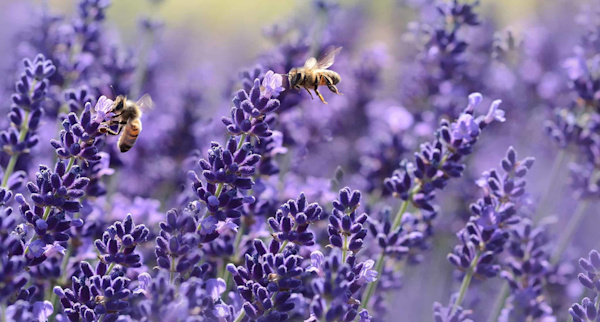
How Does Mobile Radiation Affect Honey Bees?
Honey bees are one of the most important species in the world and life without them would be practically impossible. You may have heard that a world without bees means a world without fruit, vegetables, grains, seeds and nuts. It’s true, Albert Einstein once said that “if the bee disappeared off the surface of the globe, man would have only four years to live”.[1]
In recent years, there has been a major problem with dwindling bee populations worldwide. In the UK, the population of bees dropped 17 percent and in the US almost 30 percent.
Did you know that there is a connection between dying bees and excessive mobile phone use?
A beekeeper looking after their bee hives.
Honeybees and Colony Collapse Disorder
Apiculture (the technical term for beekeeping) is a well developed industry in India, which is why the majority of research on the impact of mobile radiation on honey bees is provided by this country. The potential phenomenon of extinct bee populations worldwide is known as the Colony Collapse Disorder (CCD). It could be caused by a number of reasons, e.g. climate change and pesticides, as well as the radiation emitted by mobile phones, WiFi routers and cell phone masts. Radiofrequency radiation occurs everywhere.
In their report on bee populations in India, scientists Ved Prakash Sharma and Neelima Kumar noticed that an increase in the usage of electronic devices had led to electropollution of the environment. “Honeybee behaviour and biology had been affected by electrosmog since these insects have magnetite in their bodies which helps them in navigation”, they said.
In 2010, in India, there was a scientific experiment provided by Sahib Sainudeen who was extremely interested in the theories surrounding Colony Collapse Disorder. He noticed that there were fewer insects, although there was no visible reason for this decrease (no infection or toxic substances) so he decided to carry out specific research to investigate this further.
A bee is collecting pollen from flowers
Photo by Jared Belson
Scientific experiments with hives
Six colonies of honeybees were selected and half of them served as the control group. The test colonies were provided with working mobile phones (a frequency of 900 MHz for 10 minutes each day, for ten days) and the others without mobile phones. Flight activity and returning ability of honey bees were measured before exposure, during exposure and after exposure. The study showed that after ten days the worker bees never returned to the hives with the working mobile phones. The behaviour of the other bees remained unchanged. The mobile phone radiation was actually frying the navigational skills of the honey bees and preventing them from returning back to their hives.
In a different study at Panjab University in northern India, researchers also put mobile phones into a hive but powered them up only for two fifteen-minute periods each day. It lasted three months and they observed that eventually the bees stopped producing honey and the size of the hive reduced dramatically. There were no other sources of danger for honey bees than controlled exposure to radiation. Andrew Goldsworthy, a biologist from the UK’s Imperial College, said it may be caused by a pigment called cryptochrome which is used by bees for navigation. When it is interfered with by the influence of radiation, the bees could not find their way to the hive.
A picture of a bee with little white flowers
These studies are part of the evidence that mobile radiation has an impact on the environment. When electrosmog influences the biology of bees, which are so essential for the development of fruit and vegetables, it should be a concern worldwide, just as it already is in India.
When we heard about the connection between bees and mobile radiation for the first time, we couldn’t believe it! After reading so many studies and learning a lot of new information, we now know that never before have honey bees disappeared at such a high rate globally. We need to save our bees! They are very important for us and our environment.
Is there anything you’d like to add, have we missed anything? If you’re interested in sharing your experiences with us or writing a guest post for us, send us an email via hello@mudita.com!
Please feel free to get in touch via social media (send us some photos or videos too), you can find us on Facebook, Twitter and Instagram, let’s connect! To learn more about Mudita, take a look at our website and our other posts.
If you enjoyed reading this article, please share and recommend it!
Related stories

Mobile Phone Radiation from Scientists - 10 Top Quotes
We’d like to share some of the statements given by scientists and doctors so that you can make up your own mind with regards to phone radiation.

Is Wi-Fi Harmful to Living Beings?
Wireless internet has become a standard in almost every home. However, not everyone is asking themselves: can Wi-Fi be harmful to our health?

Does Electrosmog Contribute to the Development of Diseases?
Electrosmog is an artificial electromagnetic field emitted by all the everyday devices that we use.
If you'd like to receive the best stories from our blog, keep up to date with our progress and get notified about our product releases and special discounts.